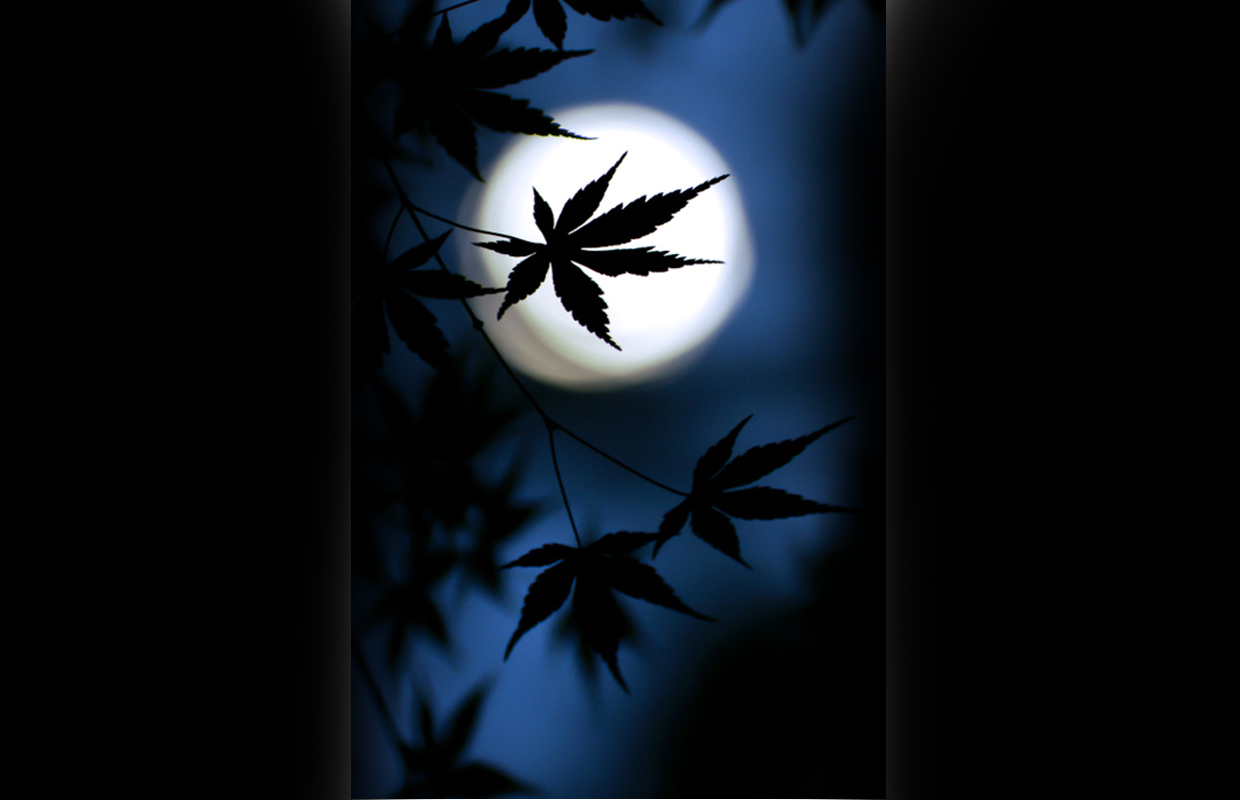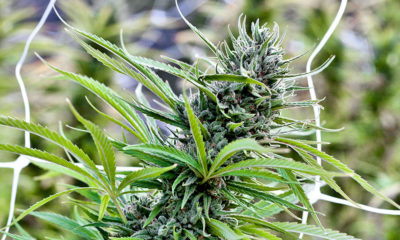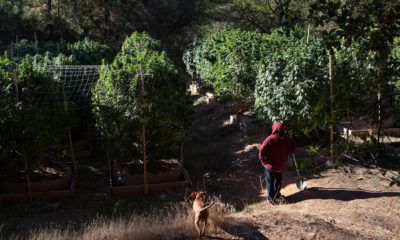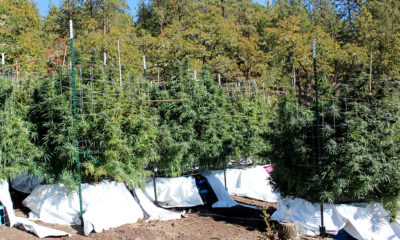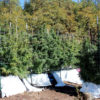Cultivation
Moon Magic: How Lunar Planting Affects Cannabis
In the vast blackness of space, a roaring hot sphere of fire commands the attention of an entire solar system. The planets dutifully rotate around this singular point, held in their place by the irresistible pull of the gravitational monstrosity. Off in the distance, a spinning orb dotted with jagged land masses and colossal bodies of water rotates at 1,000 miles per hour, basking in the warmth and radiance of the life-giving and life-sustaining force that has governed the planet since the beginning of time.
The sun plays an integral and irreplaceable role in supporting both human and plant life on Earth. It’s seemingly divine properties — particularly those that inspire growth in both edible and non-edible plants including cannabis — have motivated cultures to organize belief systems around it and farmers to create regimens that give their crops maximum exposure to the powerful rays. Because photosynthesis, the process by which plants convert light energy into chemical energy, is a vital part of the growth process, it’s an indisputable fact that the sun plays an essential role in plant development. Yet, there is another planetary body that can also have an impact on the health and vigor of plants — the moon.
The moon’s influence has been studied throughout time. It’s gravitational pull regulates the massive bodies of water that cover about 70 percent of the Earth’s surface. Naturally, because the moon has influence on all bodies of water, anything composed of water is also affected by the ever-changing stages of the moon. This means that the water in cannabis plants and soil respond as well, rising and falling in moisture, depending on the position and phase of the moon.
The effects of the moon on cannabis can be subtle but are significant. Cannabis grown according to the phases of the moon cycle are usually healthier with increased flavor and potency. The moon affects seed germination and growth, which can lead to bigger yields of more robust cannabis plants. The moon’s predictable orbit adheres to a repetitive and reliable system that ensures calculable results in plants that are deliberately grown in accordance with the moon phases.
Lunar planting finds its roots in organic and biodynamic farming techniques of ancient cultures who studied the profound power the moon had on the water on this planet. Every day of the year, the moon is rotating and moving to complete its eight stages and four phases every single month. On average, it takes about 29.5 days to complete the cycle.
There are different timing techniques that can be used to enhance the vitality of plants. The Synodic cycle uses a planting method that divides the lunar cycle into four phases or quarters from waning to waxing. The first phase, from the new moon through the first quarter moon, is considered a particularly fertile and moist time and is an ideal time to plant new seeds or take cuttings from existing cannabis plants. During the second phase when the moon is waxing, from the first quarter moon to the full moon, plants experience increased growth.
When the moon cycles from full through the last quarter, the third phase, moisture levels reach their peak. It’s not recommended to plant anything during this time. From the last quarter through the new moon, the fourth and final phase, the moon is waning and growth energy is pulled down into the roots of the plants. During this time, general maintenance is recommended. Also, it’s a good idea to check the soil and perhaps water plants, as moisture levels drop as the moon begins to wane.
Another planting method employs the Biodynamic cycle, a more meticulous growing technique that uses astrology as a planting guide. The moon travels through all 12 zodiac signs every month in two and a half day intervals, changing its position in the sky and the influence it has on plants. Each sign falls into one of four elemental categories — earth, air, fire and water — with each associated with masculine or feminine characteristics that can enhance or hurt plants.
It isn’t recommended to plant seeds when the moon is in a fire sign like Aries, Leo and Sagittarius, signs with masculine properties that include dry, hot attributes. Plants are fertile when the moon is in an earth sign like Capricorn, Taurus and Virgo. This is a good time to plant, when it’s moist, cool and fertile — characteristics of feminine signs. When the moon is in an air sign like Libra, Aquarius or Gemini, planting isn’t recommended, although it’s a good time to perform general maintenance. Taking cuttings, planting seeds and transplanting cannabis plants is recommended when the moon is in water signs like Scorpio, Cancer and Pisces.
The Sidereal planting method is similar to the Biodynamic cycle, except it focuses on primarily on the moon’s orbit around the earth. The orbit is divided into 12 equal 30 degree sections and takes 27.3 days to complete. With this method, the positioning of the moon is used as a guide for planting.
The impeccable timing and rhythm of the moon provides growers with the opportunity amplify the results of their growing efforts. If utilized correctly, the lunation cycle can have a noticeable influence on the exuberance and robustness in crops. When paired with the unparalleled germinating power of the sun, lunar planting can make a remarkable difference for cannabis growers and cultivators eager to improve their harvest.
Have you ever tried any lunar planting techniques while growing cannabis? Tell us about it in the comments.



